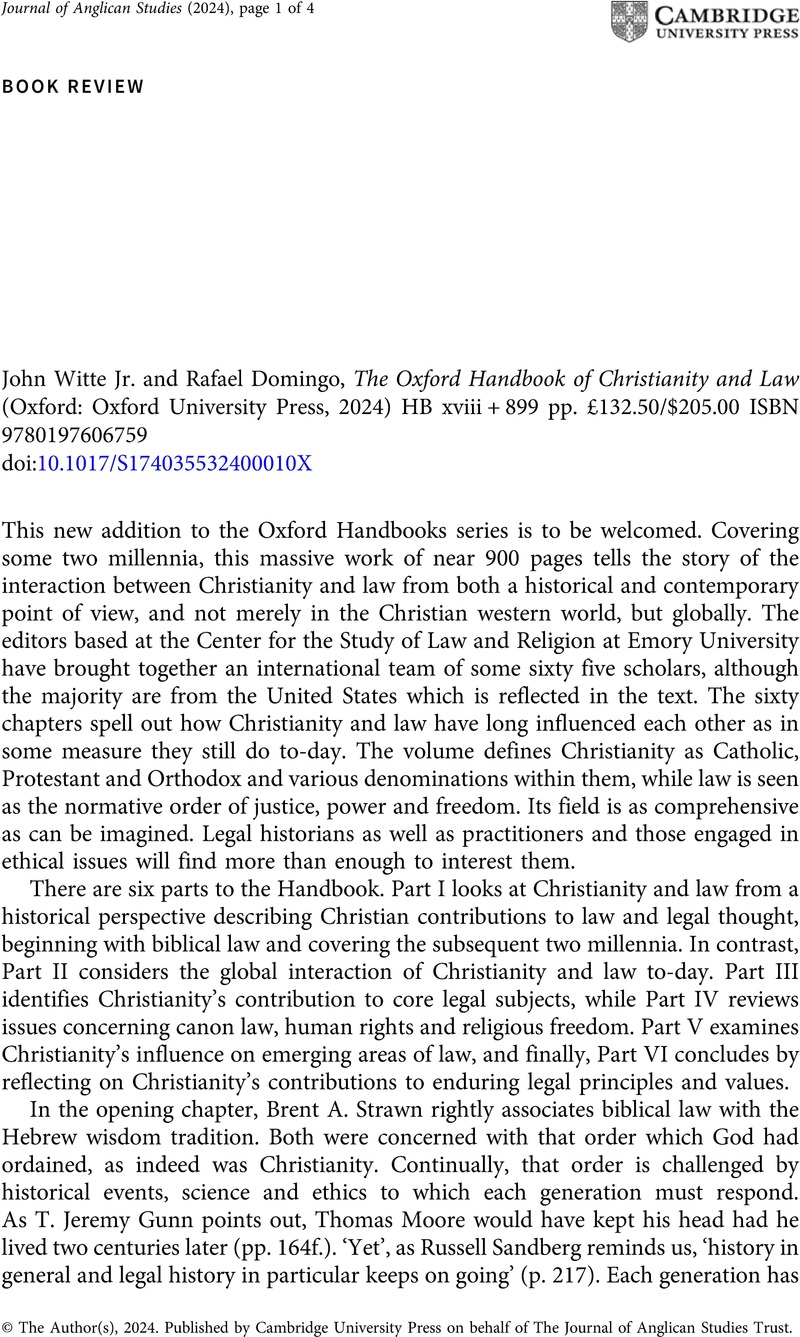No CrossRef data available.
Article contents
John WitteJr. and Rafael Domingo, The Oxford Handbook of Christianity and Law (Oxford: Oxford University Press, 2024) HB xviii + 899 pp. £132.50/$205.00 ISBN 9780197606759
Review products
John WitteJr. and Rafael Domingo, The Oxford Handbook of Christianity and Law (Oxford: Oxford University Press, 2024) HB xviii + 899 pp. £132.50/$205.00 ISBN 9780197606759
Published online by Cambridge University Press: 27 March 2024
Abstract
An abstract is not available for this content so a preview has been provided. Please use the Get access link above for information on how to access this content.

- Type
- Book Review
- Information
- Copyright
- © The Author(s), 2024. Published by Cambridge University Press on behalf of The Journal of Anglican Studies Trust



